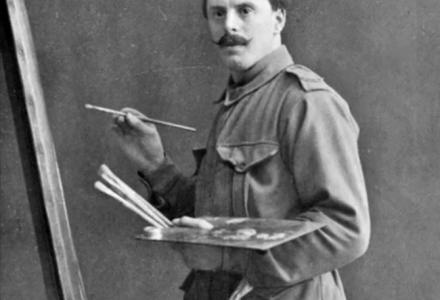Private James Dann, a fisherman from Broome, enlisted soon after the Gallipoli Landings. He was sent to the Peninsula, wounded at Lone Pine, and sent home with a bullet in his body.
The slightest exertion sent pain through his stomach, caused difficulty breathing, and led to collapse. Unable to take on ‘heavy work’ Dann was given a job weaving baskets. It seemed a slight to his manhood and he was paid barely a pound a week. Despite his injury, and the want of any experience of farming, Dann took up a block as a soldier settler. Within a year, he developed pulmonary tuberculosis, a portion of his lung had collapsed and the bullet lodged in his body caused intense pain on bending.
Sick and injured veterans were told that working the land would be a chance to regain their manhood and independence. But thousands failed—James Dann amongst them. In 1923 he walked off his property.
Dann lost not just his farm but also his family. At risk of infection from TB, his wife and two children were ‘living apart from him under a separation order’. Tuberculosis was known at the time as the ‘wasting disease’. In the hope of avoiding its spread sufferers were often isolated.
Dann died in Concord Repatriation Hospital in November 1953—a bullet from Gallipoli still in his body. His story reminds us that the survivors of the Great War lived a lifetime with their injuries. Having faced the Great War they faced the Great Depression. Many were sent away to work on worthless holdings; many were denied the comfort of their families. Post-war Australia was not a land fit for heroes.
For full attribution of sources, suggestions for further reading and an extended version of the story itself see ‘I still have the bullet in my body: James Dann’ in Bruce Scates, Rebecca Wheatley and Laura James, World War One: A History in 100 stories (Melbourne, Penguin/Viking, 2015) pp. 28-29; 354.



